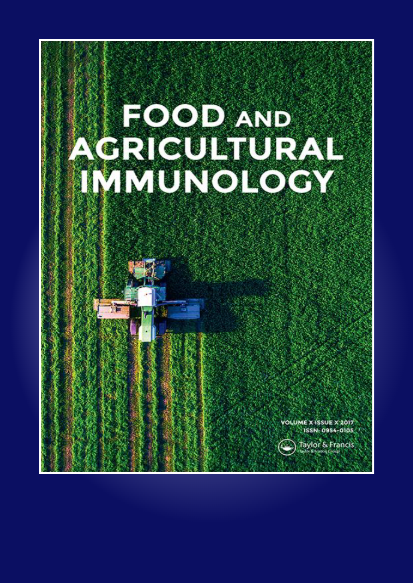Kadsura japonica fruits exert immunostimulatory and anti-obesity activity in RAW264.7 and 3T3-L1 cells
IF 2.1
3区 农林科学
Q3 CHEMISTRY, APPLIED
引用次数: 3
Abstract
ABSTRACT Under the COVID-19 pandemic, interest in immune enhancement and anti-obesity is increasing. Thus, in this study, we investigated whether Kadsura japonica fruits (KJF) exhibits immunostimulatory activity and anti-obesity activity. KJF increased the production of immunostimulatory factors and phagocytosis in RAW264.7 cells. Inhibition of TLR2 and TLR4 blocked KJF-mediated production of immunostimulatory factors in RAW264.7 cells. In addition, the inhibition of MAPK and PI3 K/AKT signaling pathway reduced KJF-mediated production of immunostimulatory factors, and the activation of MAPK and PI3 K/AKT signaling pathway by KJF suppressed the inhibition of TLR2/4. KJF attenuated the lipid accumulation and the protein expression such as CEBPα, PPARγ, perilipin-1, adiponectin, and FABP4 related to the lipid accumulation in 3T3-L1 cells. In addition, KJF inhibited excessive proliferation of 3T3-L1 cells and protein expressions such as β-catenin and cyclin D1 related to cell growth. These findings indicate that KJF may have immunostimulatory activity and anti-obesity activity.桂皮对RAW264.7和3T3-L1细胞具有免疫刺激和抗肥胖活性
摘要在新冠肺炎大流行的背景下,人们对增强免疫和抗肥胖的兴趣正在增加。因此,在本研究中,我们研究了南五味子(KJF)是否具有免疫刺激活性和抗肥胖活性。KJF增加了RAW264.7细胞中免疫刺激因子的产生和吞噬作用。TLR2和TLR4的抑制阻断了KJF介导的RAW264.7细胞中免疫刺激因子的产生。此外,MAPK和PI3K/AKT信号通路的抑制降低了KJF介导的免疫刺激因子的产生,而KJF对MAPK和pi3K/AKT信号通路的激活抑制了TLR2/4的抑制。KJF减弱了3T3-L1细胞中的脂质积聚和与脂质积聚相关的蛋白质表达,如CEBPα、PPARγ、周脂素-1、脂联素和FABP4。此外,KJF抑制3T3-L1细胞的过度增殖以及与细胞生长相关的蛋白表达,如β-连环蛋白和细胞周期蛋白D1。这些发现表明KJF可能具有免疫刺激活性和抗肥胖活性。
本文章由计算机程序翻译,如有差异,请以英文原文为准。
求助全文
约1分钟内获得全文
求助全文
来源期刊

Food and Agricultural Immunology
农林科学-毒理学
CiteScore
5.30
自引率
6.70%
发文量
52
审稿时长
2 months
期刊介绍:
Food and Agricultural Immunology is an international open access journal publishing original immunological research with applications in food, agricultural, environmental and veterinary science. Submissions describing the use of immunological techniques and methods are particularly welcomed.
The journal aims to expand our understanding of the interactions at the interface of food and immune systems including studies on:
-Development of diagnostic systems – all types of ligand-based assays, e.g. antibody, aptamer
-Application of ligand-based assays for the detection or identification of molecules of interest in food science, agricultural research, veterinary investigations and clinical systems relating to food allergy or sensitivity to agricultural chemicals
-Effects of food on the immune system
-Studies on allergy and allergic reactions
-Investigations into food allergies
-Development of allergen-free food systems
-Development of novel assay formats
-Applications of assay systems to the monitoring of food items in relation to safety and labelling
-Food quality issues, e.g. speciation, adulteration and contamination
-Comparisons between different analytical techniques
The journal publishes research and review articles and is essential reading for food scientists, immunologists and all those concerned with the interaction between food and immune systems.
 求助内容:
求助内容: 应助结果提醒方式:
应助结果提醒方式:


